What’s the most important part of a thriving business?
For most, it’s sales.
If you have enough customers, even poorly run companies can still profit. Of course, making sales isn’t always easy.
In fact, it can take several touchpoints with a prospect before they are ready to buy from you.
For almost all businesses, retaining a customer is far easier (and cheaper) than getting a new one. Research has shown that increasing customer retention by 5% can improve a company’s profitability by 25% to 95%.
Loyal customers have a huge lifetime value because they’ll buy from you repeatedly. In fact, Khoros notes that 83% of people feel more loyal to brands that acknowledge complaints and resolve the issue.
Here’s another revelation — loyal customers increase their dollar value up to ten times more than the initial purchase.

That’s why gaining customer trust and keeping it after a purchase is so important.
And yet, most businesses have massive holes in their customer service.
They spend so much time optimizing their conversion rate for the initial purchase that they forget to spend any real-time optimizing what happens after the sale.
This leads to frequent mediocre, or even bad, experiences when things go wrong (which they do on occasion).
A Zendesk study of consumers found that just one bad customer experience caused 80% of consumers to not buy again from that brand.
Most of those bad experiences are preventable.
But most businesses don’t realize that it’s not just the complaining customers who didn’t have good experiences.
According to Dunvegan Group research, 20% of customers who feel satisfied with their purchase will switch to a competitor in the future.
So, not only do poor customer experiences decrease loyalty, but even typical ones will result in many of your customers trying out a competitor.
If you haven’t thought seriously about how your customer experience after the sale affects trust and loyalty: it’s time.
For the rest of this post, we’ll show you the seven keys to keeping customer trust and gaining their loyalty.
1. Does it really need to be said?
The biggest reason why customers leave a brand is because they don’t like the product or service they get.
According to a study, 68% of customers will stop buying from a brand for this reason.
Your number one priority is to improve your customer service when it comes to addressing customer complaints.
Do everything you can to make sure your customers are happy.
Resolving problems with a process: Millions of dollars have been spent over the years on determining how to deal with customer complaints most effectively.
If you do a good job addressing a problem, you can still win that customer’s loyalty if the problem was caused by some accident, not negligence.
If you do research, you’ll find many different customer resolution models, all with their own clever acronyms: HEART, LAST, etc.
But despite having different letters, they all describe the same main stages:
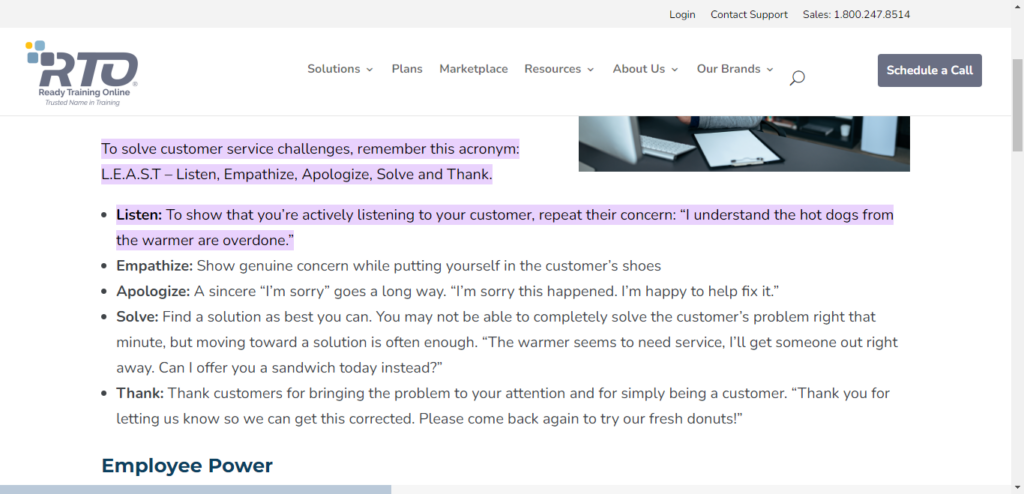
When a customer comes to you or anyone on your team with a complaint, they should be met with the following:
- Listening – Don’t try to fix anything before the customer can vent and explain the problem. Give them as much time as they need.
- Empathy – Always try to find ways to relate and connect with the customer. It turns the situation into an us vs. the problem rather than the original you vs the customer situation.
- Apologizing – You must try to give every customer the best experience possible. If something goes wrong, a simple apology goes a long way. People can be pretty understanding when you sound like a person, not a corporation.
- Solving – First, ask the customer how they’d like the problem to be solved. Or offer your own solutions for them to choose from. Go above and beyond here to maximize your chances of retaining that customer.
Call your own process whatever you like, but it should contain those four elements at the very least (in a similar order).
The two best ways to encourage customers to speak up: Here’s something that might surprise you. The average business only hears from 4% of its dissatisfied customers.

That means that you will never hear from the vast majority of unhappy customers.
That’s a problem.
However, you can double or triple this response rate by making your support more accessible to customers.
Some companies make it difficult to find customer service contact information or make their customers search through irrelevant documentation first.
Don’t do that.
Display your customer service contact information clearly on your website and also in any emails or letters you send your customers.
You want to hear from them if they have any complaints. That’s your only chance of fixing the problem and keeping a customer.
Yes, hiring an extra customer service rep might cost you more, but you’ll make 10 times that in the long run from the customers you retain.
Don’t be shortsighted.
The type of contact also plays a role.
A study found that most people prefer to talk with a real person when they have a problem.

This means the best option is to have a toll-free phone number.
On top of that, you want a couple of other contact methods for those who don’t like the phone.
The most complementary method, in our opinion, is to have a live chat option on your website, especially for anything software-based.
Both of these options should be as easy to find as possible for a customer. Take a look at how HostGator displays its contact information as you hover over the contact tab:
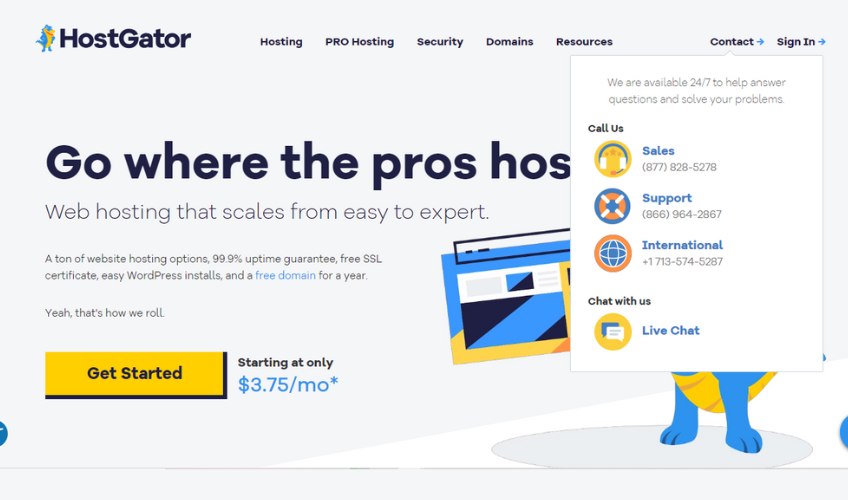
What about email? Email is the final option you should consider offering. The study we mentioned before found that about a third of people like using email.
Usually, people use email for non-pressing issues. But if a big problem needs fixing, they want to talk to someone immediately.
If you offer email support, ensure customers don’t wait a week before they hear back from you. They should receive some response within a day.
Go beyond the minimum – follow up: When someone calls about a problem, it’s usually because they’re frustrated, angry, or annoyed. They’re emotional, and it shows.
This is good because many people won’t tell you their problems unless they’re emotional enough.
But after the initial complaint, most will calm down. Even if your initial solution didn’t help much, they aren’t very likely to tell you about it.
That’s a BIG problem. Because if they aren’t thrilled with your solution, you’ve lost their loyalty.
You need to follow up with every single customer that makes a complaint.
Here’s an example of how Groove followed up with a customer who was having trouble integrating X (Twitter) with their software:

They received a response from the customer saying that they got busy and forgot about the problem.
If they forget about the problem, they forget about your product and won’t buy from you again.
Take the time to follow up and see if your customer is thrilled with your solution. If they aren’t, encourage them to contact you again.
Tip: Follow up the same way they contacted you. If they emailed you initially, send them an email follow-up. If they call you, give them a call.
2. Learn to be a psychic for your customers
What if you could anticipate customer complaints?
Then, you could take action to minimize the number of complaints and bad experiences.
Many complaints happen because customers don’t fully understand what they’re buying.
It may be because the sales page isn’t unclear or the customer assumes too much.
Either way, the customer doesn’t get what they expected.
If you think you’re ordering an iPad and getting a Surface tablet instead, you will be rightfully annoyed.
So, how do you prevent this from happening?
You need to answer all important questions before a customer buys the product. If they still want to buy after any misconceptions are cleared up, they are much more likely to have a good experience.
Remember that it’s never just one potential customer with a question. So, even if you only get one or two complaints about a specific issue, it could mean several other customers have the same problem.
But you can eliminate many of these bad experiences by using a simple FAQ (frequently asked questions) section on your sales page.
For example, here’s what you see on LeadPage’s FAQ page:
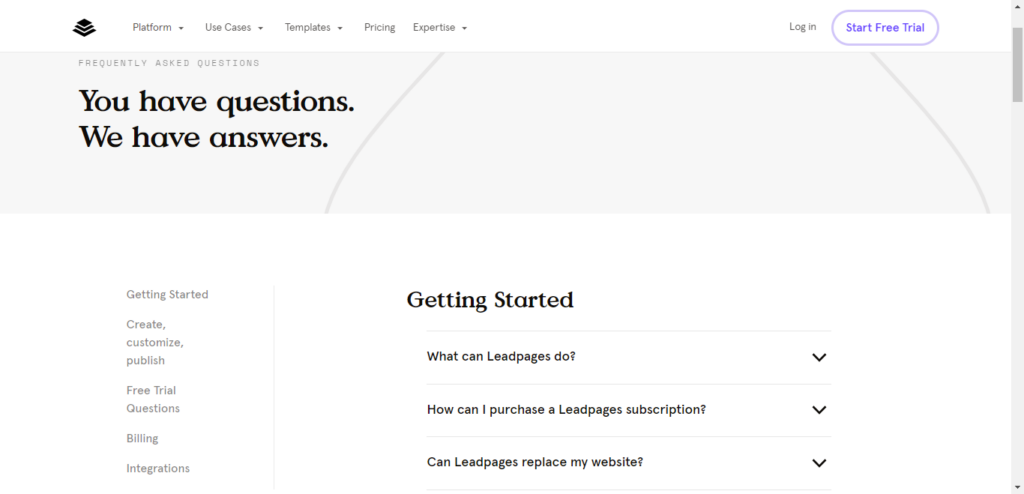
Another example of a great FAQ: You can tell when an FAQ is really good because it answers many potential buyers’ questions.
Good FAQs will improve your conversion rate and provide all the necessary details to help your potential customers clearly understand the product, improving their overall experience.
Nathan Barry sells a course about building an audience and product called Authority.
On his landing page, he has these FAQs:

He offers multiple packages, and we could see how a visitor might initially not understand that.
They come across the packages on the landing page one by one, like this:
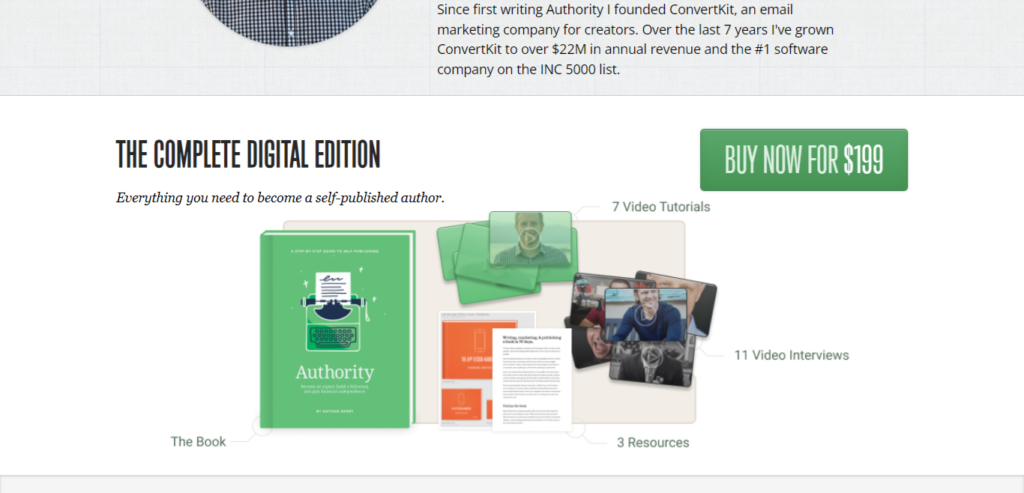
By answering the “Which package should I buy?” question in the FAQ, Nathan clarifies that there are indeed multiple packages, and some are better than others.
This prevents someone from accidentally clicking the first Buy button they see, thinking that they are all the same, only to realize that they bought the wrong product.
If they contact you, this is easy to fix, but many won’t. Instead, they’ll feel disappointed and possibly misled, and Nathan won’t get their loyalty.
3. There’s nothing worse than feeling used
Everyone knows this feeling, and everyone hates it.
Let’s say someone pays you much attention, so you naturally think they like you. Then, as soon as they get something from you, they stop paying any attention to you.
That is until they need something again in the future.
Don’t let your business be this guy.
Your relationship with your prospects and customers is a relationship. It goes beyond just getting money from them for your products.
They need to know that your primary desire isn’t just to make money but to improve their lives and those of others like them.
Think about the brands you support the most. You likely do that because they seem like they truly care about the people involved in their work, their customers, and the world at large.
Tesla, for example, is trying to create environment-friendly technology to help the world, not just to make a quick buck.
You can create a similar image of your business in the minds of your customers.
It starts with giving more than you take.
Be mindful of what your sales pitches look like. Every smart marketer these days does most of their selling through email marketing.
When promoting a product you sell through email, you’ll typically create some sales sequence.
This is a series of emails that give details about your product, provide case studies, and tackle any concerns your subscribers might have about the product.
The problem is that it often turns into a pitch fest:

A business will aggressively send emails with the intent to sell the product (offer emails).
During this cycle, which can last anywhere from a few days to a few weeks, a marketer might send an average of an email daily.
By the end of it, some percentage of subscribers will buy the product.
But what happens to the emails? They stop.
At the very least, they don’t come nearly as often.
Here’s what the new customer sees:
- They’re sending lots of emails about how this product can solve my problem
- They make a good case
- Okay, it seems like they’re really interested in helping, so I’ll buy it
- …(two weeks later and zero communication or one email)
- Oh…they just wanted my money
And that’s how you instantly lose a customer for life.
If you send many emails right before someone buys something and then go quiet, your customer will feel used.
Instead, continue to send them emails that offer free solutions to other problems they might have.
This is, in essence, content marketing.
For example, Ramit Sethi founded the seven-figure business I Will Teach You To Be Rich.
He recently promoted his course Zero to Launch to his email list.
Guess what happened after he closed the course? That’s right, he went right back to sending valuable free content:

Let’s take a second to see how a customer feels in this case.
Ramit promises that his course could greatly impact your life and that it’s truly good for you.
You believe him and buy it.
Instead of dropping off communication, he sends you your product, but he also sends you more free information about how you can solve other problems.
That has to give you the impression that it’s not just about the money for him. It shows that he really cares about continually providing value to you so you can improve your life.
4. Support before moving forward
After you get a new customer, one of the worst things you can do is to stop communicating with them. We just saw that.
There’s one other really bad mistake that you want to avoid: promoting another product before they’ve even received the first one.
When someone buys a product, they’re trading their money for your product.
However, if they purchased it online, they may not get that product for a while. Usually, that’s at least a few days if it’s a physical product.
At this point, they’ve given up money but got nothing in return, which makes them feel like you owe them something—which you do.
But if you ask them to buy additional products at this stage, they have no choice but to think that you don’t really care if they get what they’re owed. It seems like you only care about making money from them.
It’s a great way to lose a customer.
To illustrate this further, let’s say someone asked you to lend them money. Imagine how you would feel if they came back the next day or week asking for more money without repaying the original amount.
Most people are going to be offended, angry, or annoyed.
The takeaway: You need to take care of all aspects of your customer’s order before moving them on to any future products.
A good friend always checks in – As someone who has sold both products and services, we love seeing how they improve the lives of our customers.
It’s a very rewarding part of business, and we hope you enjoy it too.
All you need to do is show this interest—show that you care.
Check-in with your customer after an appropriate amount of time (enough to receive and possibly try the product).
One company that does this is Dell, a computer company. Two to three weeks after a computer is supposed to be delivered, a customer service rep will call the customer to check-in.
The main purpose is to ensure the computer arrives without big issues. This is also a great way to discover more complaints you normally wouldn’t hear about.
Another example is Prograde, a supplement company.
In an email following an order, they encourage you to contact them if you have any problems at all.
5. Case studies aren’t just for selling
Regardless of whether someone just bought something from you or is considering buying from you, you want them to think one thing:
That if they buy it, they will be making a good decision. It will make them happy.
Many factors go into that feeling, but more than anything else, it is seeing the results of others.
Showcasing happy customers in your case studies helps your new customers feel like they probably just made a good decision instead of feeling buyer’s remorse.
The better someone feels after buying one of your products, the more likely they will buy again.
You build loyalty by delivering a good feeling.
Of course, case studies are also powerful sales tools. They can have a significant impact on your conversion rate.
They help in two different ways.
Again, Ramit is a great example of that.
Near the end of his sales cycle, he sent an email showcasing different customers who had bought the product and were now doing great:

He had about 10 different mini-case studies in that email.
We strongly recommend using case studies in your content marketing and sales process. They are one of the most effective tools to build trust with your readers.
6. If you do one thing, do this…
All the things we’ve talked about so far deal with fixing mistakes.
And you should do them.
But there’s one thing we haven’t addressed yet…
How do businesses stay profitable even when making these mistakes?
Sure, they could profit more, but they’re doing okay as it is.
The answer is that they have a good product.
And if you have a great product, the other things we’ve looked at don’t matter as much. If you truly have a great product, your customers will have a great experience, even if something else is slightly off.
Most importantly, if you have a product that is way better than any of your competitors, you leave customers no choice but to be loyal.
Even if they tried your competitor, they would quickly see that your product is far superior and return to you.
Deliver on your promises: Anyone can make a product sound great, but can you actually deliver on those promises?
A great example of making big promises is Kopywriting Kourse, a very popular course on copywriting.
On the landing page, the creator breaks down all the course modules.
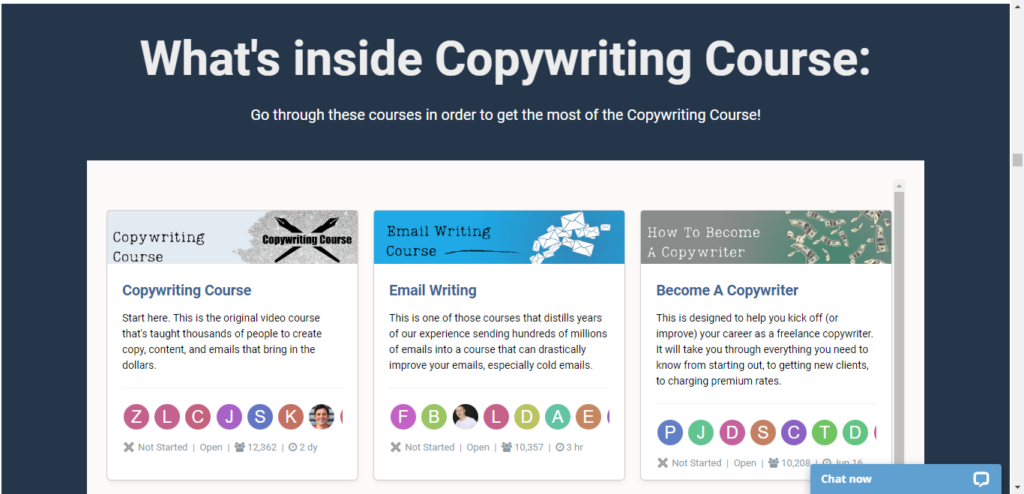
Anyone can claim they have awesome tricks and techniques, but actually delivering them is another thing.
Without actually buying the course, that’s about as sure as you can be that he will deliver on his promises.
You can deliver in different ways: You may be unable to standardize some aspects of your product or service.
A good example of this is Nathan Barry’s Authority course which we looked at earlier.
In one of his packages, he offers a one-on-one call on top of everything else he promises.
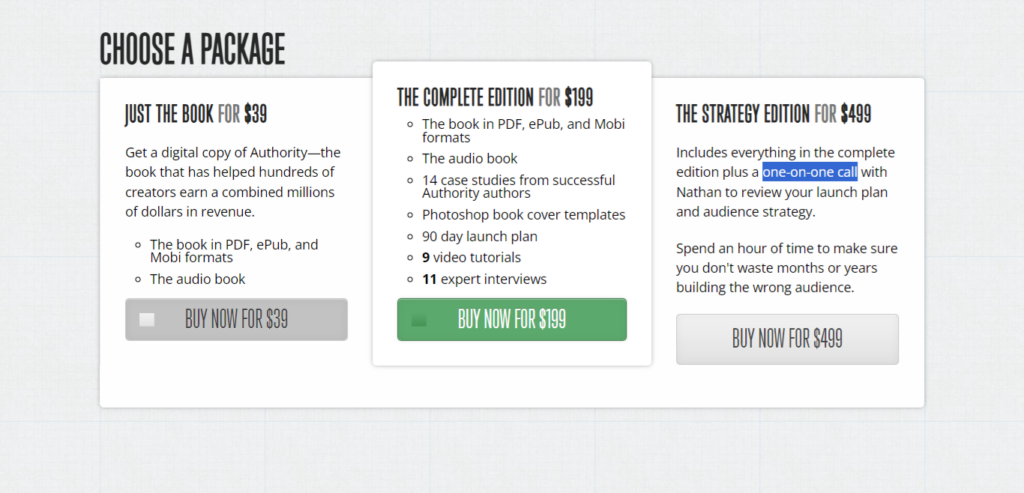
All the books and tutorials are easy to deliver. He can have those sent automatically. Those are fixed products.
However, the phone call isn’t.
If you promise something that can vary, like a phone call, you must exceed all expectations.
A potential customer will expect to be able to set up the call in a reasonable amount of time, say a week or two after buying. They will also expect a full hour.
There are three main scenarios for delivering the product- the phone call- with wildly different outcomes.
Let’s look at these hypothetical scenarios:
- Nathan delivers slowly – Maybe it will take a few months to schedule the call. The customer can easily find better service somewhere else in the future. Nathan didn’t deliver in this scenario.
- Nathan delivers as expected – This is okay, and many customers will be happy with this.
- Nathan exceeds expectations – He schedules the call whenever is convenient to the customer (including the first few days after buying) and spends an extra 30 minutes with them.
The last option costs him 30 minutes of his time initially, but that’s how you blow away a customer.
Now, they will trust you no matter what because not only did you fulfil your promises, but you exceeded them. Those 30 extra minutes will likely lead to thousands of dollars of revenue in the future.
The takeaway: Make big promises about your products, but ensure that your product meets those expectations. If possible, go above and beyond those expectations.
7. Everyone wants to feel special
Rewarding is one of the most effective ways to increase customer loyalty.
If you give your customers something extra, they will feel a bit indebted to you, based on the reciprocity principle.
Most will feel obligated to give something back to you somehow.
Some do that by telling others about how great your products are, while others will do that by being a loyal customers. Either way, a small investment upfront can really pay off.
Your options depend heavily on your specific business, but here are four main types of rewards you can give out.
Example #1 – Exclusive offers: No one likes being pitched to. That is unless it’s an actually amazing opportunity that only they get.
ProFlowers is one of many online flower shops.
They send out massive discount offers around big occasions, but only for their returning customers.

For most customers, getting this offer is a gift since they know they’ll buy the flowers anyway. This saves them a lot of money.
In the future, they’ll have no reason to go elsewhere when they need to order flowers.
Example #2 – Loyalty programs: A loyalty program can be a great way to retain customers if you sell frequently re-ordered products.
The most common and successful examples of this are fast food places. Every purchase is a change to earn rewards which you can claim via an app.
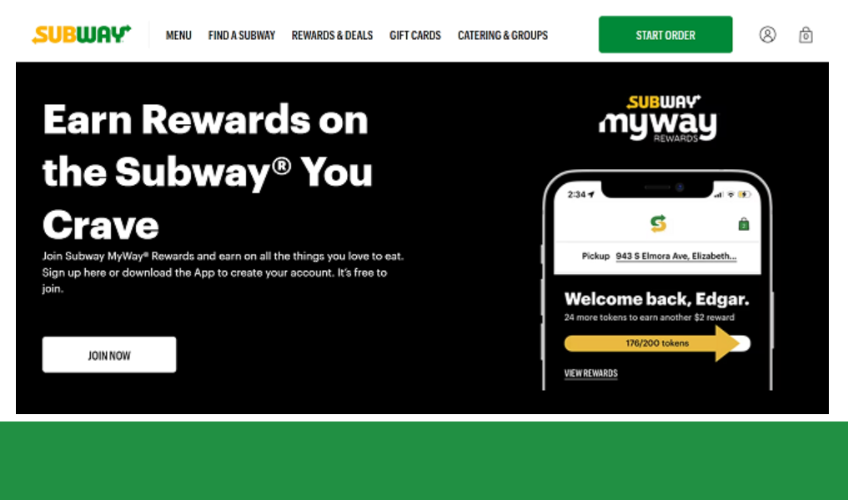
Online stores also take advantage of this type of program.
Example #3 – Bonus events: Any potentially free thing you can offer your customers is good.
For example, e.l.f. has tiered benefits that link to customer loyalty:
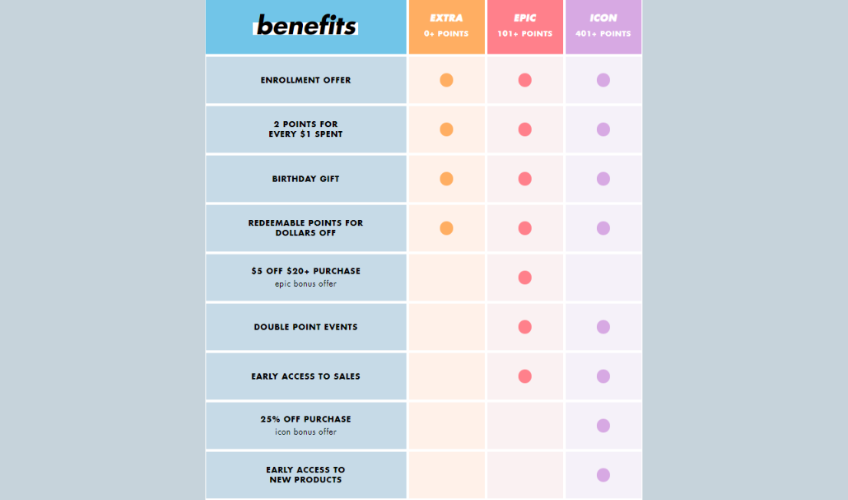
This gives customers a visual reference of the value return of their loyalty.
Example #4 – Samples: Finally, you can reward customers by surprising them with free samples (if possible in your niche).
For example, if you purchase from Sephora, they’ll send you a sample of your choice:
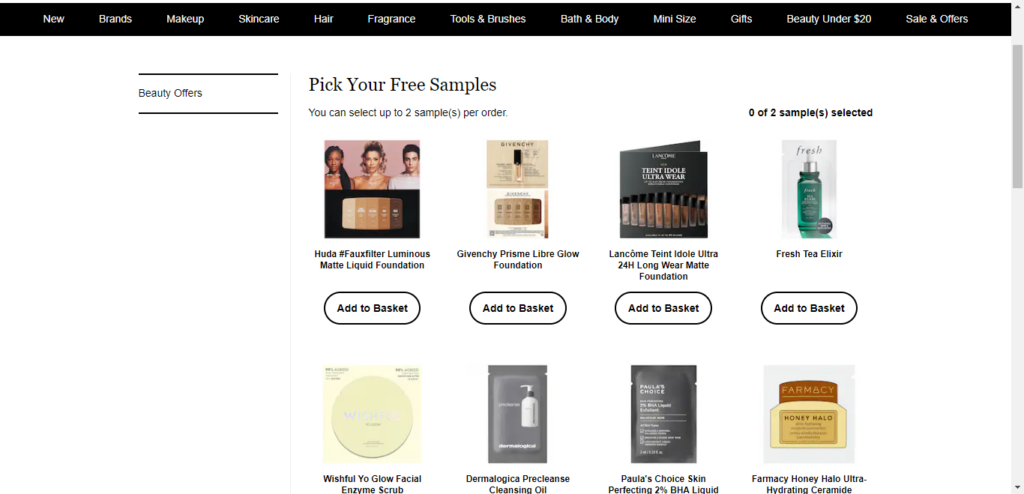
Even though the samples aren’t worth much, customers like them, increasing customer loyalty.
Find any way you can to show your customers that you really appreciate their business.
That’s how you make them feel special and earn their loyalty.
Conclusion
It’s true that making a sale is difficult.
But once you do, your work doesn’t end there.
If you want to maximize the value of a new customer, you need to convert them into a loyal, repeat customer.
You must show that you deserve their trust and loyalty to do that.
We’ve shown you the seven main keys to building customer trust and loyalty after a sale, which you can use immediately.
Start with one or two, and then try the rest over time.
